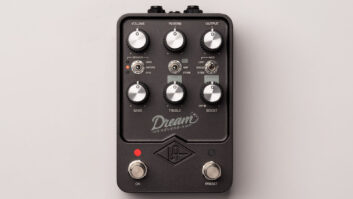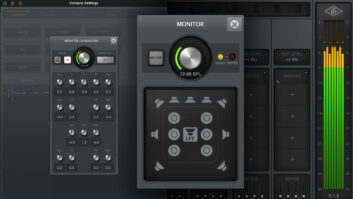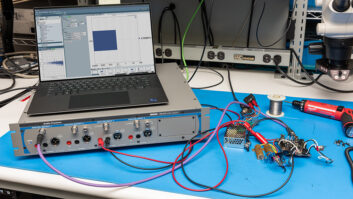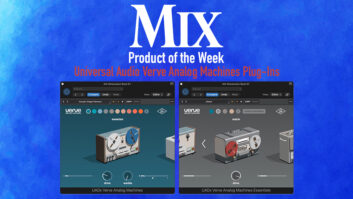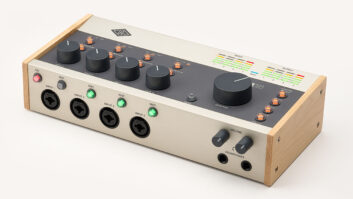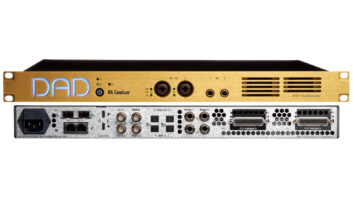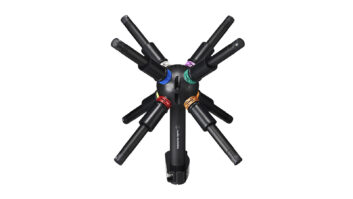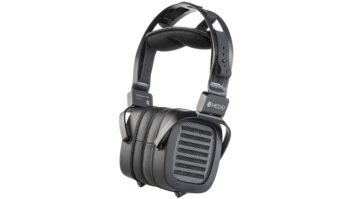
In the audio industry, the terms “legendary” and “classic” have become overused to the point that they have lost all meaning. However, certain products-such as the AKG C-12, Fairchild 670, Neumann U47, Neve 1073, Pultec EQP-1A, UREI/Universal Audio 1176 Compressor/Limiter and LA-2A Leveling Amplifier-are unquestionably examples of audio excellence and deserve classic status. Yet aside from some faithful (and a few not-so-faithful) clones of the LA-2A and 1176 that emerge now and then, both Universal Audio products have been out of production for years.
Now Jim and Bill Putnam have rekindled the Universal Audio name, and are re-introducing the revered LA-2A and 1176LN at AES. Like their father, the late M.T. “Bill” Putnam-who founded Universal Audio, UREI, Chicago’s Universal Recording, Coast Recorders in San Francisco and L.A.’s United Recording-the sons are deeply involved in audio: Jim’s a recording engineer/musician, and Bill (currently completing his Ph.D. in electrical engineering at Stanford) also runs Kind of Loud Technologies (www.kindofloud.com), a company that makes software plug-ins for surround sound production.
Go to the Focus on Universal Audio page to see video and learn more about UA products
“My brother and I wanted to build analog gear based on some of the stuff my dad did, so we decided to use the name Universal Audio as a tribute to him,” explains Bill. But ironically, their father helped the re-issue project. “When we sold our family’s home in L.A. last year, we came across his design notebooks, with notes on all the transformers he ever designed,” Bill explains. “In the 1176, the custom output transformer is a complicated circuit with three layers of feedback embedded with each other; that transformer was really tough for us. We had this square wave problem-ringing-and we were trying to figure it out. Sure enough, his design notebook had a sketch, showing that same ringing we were getting, and how he solved it. That was the last little nut we had to crack to get it right.”
All along, remaining true to the original designs was a number one priority for the brothers. “When you talk to people about 1176s, they seem mostly concerned with whether it is ‘blackface’ or ‘silver.’ But among the blackface units there’s quite a bit of variation,” says Bill. “On our 1176, we are going after the D or E revisions, which were the last versions with Dad’s Class A output stage. Our 1176 circuit board is laid out exactly like the original, and we opted to make it just like the original, even though we could have made it much smaller these days. All of the analog designers I had working on this unit had comments like ‘Oh, I can make this better’-but in this case, ‘better’ means more like the original.”
Now that ICs and surface-mount components are the norm, finding the proper components required some detective work. “The LA-2A input transformer was a custom part,” says Bill. “But other LA-2A parts became a matter of finding out which company bought which company-and when. The original electroluminescent panel was made by a small company and eventually I found the trail of the three companies that had bought it since. We found the original power transformers, meters and the rotary switch for the LA-2A that same way. The pots were all originally Allen-Bradley, and Clarostat-who bought that line-is not quite as good, so on the LA-2A, we used a superior part. But that’s the only departure that’s different from the original.
“The LA-2A is all hand-wired with point-to-point wiring,” Bill adds, “and all the components are built on the turret board-a little piece of Bakelite with a turret standoff. It will look exactly like the original, even down to the wiring, which has wax paper ties rather than modern tie wraps.”
The new Universal Audio unveils its analog products at AES under the Universal Audio Classics brand. Pricing wasn’t finalized at press time, but will be approximately $2,000 for the 1176 and $3,000 for the LA-2A, with shipments to begin Q1 2000. And as a fitting tribute, Bill was recently notified by NARAS that M.T. “Bill” Putnam was in consideration for a technical Grammy at the 2000 Grammy Awards.
For more information, contact: Universal Audio, 604 Cayuga St., Santa Cruz, CA, 95062; 831/454-0630; fax 831/466-3775; www.uaudio.com.
